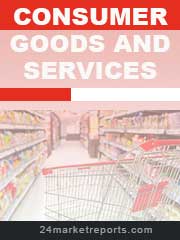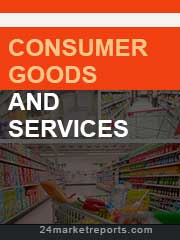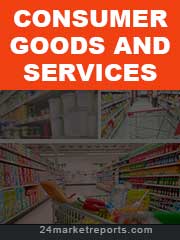
Download FREE Report Sample
Download Free sample
MARKET INSIGHTS
Global accelerated cooking oven market size was valued at USD 1,866 million in 2024. The market is projected to grow from USD 1,966 million in 2025 to USD 2,656 million by 2032, exhibiting a CAGR of 5.3% during the forecast period.
Accelerated cooking ovens, also known as speed ovens or mini ovens, are compact cooking appliances that combine multiple heating technologies to reduce cooking time significantly. These advanced appliances utilize a hybrid approach, integrating convection, microwave, and radiant heat technologies to achieve cooking speeds up to 8 times faster than conventional ovens while maintaining food quality. The product category includes both built-in and countertop models, with features ranging from precise temperature control to smart connectivity options.
The market growth is primarily driven by increasing urbanization and changing consumer lifestyles that demand time-efficient cooking solutions. Commercial kitchens represent the largest application segment due to the critical need for high-throughput cooking in restaurants and foodservice establishments. However, the residential segment is growing rapidly as consumers seek professional-grade performance in home kitchens. Major players like Bosch, Whirlpool, and Siemens are investing heavily in R&D to enhance energy efficiency and cooking precision, with recent innovations focusing on AI-powered cooking programs and IoT connectivity.
Rising Demand for Time-Efficient Cooking Solutions to Fuel Market Expansion
The accelerated cooking oven market is experiencing robust growth, primarily driven by the increasing need for time-saving cooking appliances in both residential and commercial settings. With modern lifestyles becoming increasingly fast-paced, consumers are prioritizing cooking solutions that can reduce meal preparation times by up to 70% compared to conventional ovens. The food service industry, which accounts for nearly 45% of accelerated oven sales, is particularly adopting these appliances to improve kitchen efficiency and reduce customer wait times. The combination of convection, microwave, and radiant heating technologies allows these ovens to achieve cooking speeds that traditional appliances cannot match, making them indispensable in today's high-pressure culinary environments.
Technological Advancements in Cooking Appliances to Drive Product Innovation
To know more about market statistics, Download a FREE Sample copy
Continuous innovation in cooking technologies is significantly propelling the accelerated oven market forward. Recent developments include smart connectivity features that allow remote control via mobile apps, precision temperature controls with AI-based algorithms, and self-cleaning functions that reduce maintenance requirements. Major manufacturers are investing heavily in R&D, with some allocating up to 8% of their annual revenue toward developing next-generation cooking solutions. The integration of Internet of Things (IoT) capabilities enables predictive maintenance and recipe optimization, adding value for professional chefs and home users alike. These technological improvements are making accelerated ovens more versatile and user-friendly, thereby expanding their potential customer base across different demographics.
➤ For instance, leading manufacturers recently introduced models with automatic food recognition technology that adjusts cooking parameters based on the detected food type, improving convenience while maintaining food quality.
High Initial Investment Costs Limiting Market Penetration
While accelerated cooking ovens offer numerous advantages, their premium pricing remains a significant barrier to widespread adoption. Commercial-grade units can cost between 3-5 times more than conventional ovens, putting them out of reach for many small businesses and budget-conscious consumers. The sophisticated technology and components required for these appliances contribute to their higher manufacturing costs, which are ultimately passed on to buyers. This pricing challenge is particularly evident in developing markets where consumers are more price-sensitive, with adoption rates in these regions being nearly 30% lower than in developed economies.
Other Challenges
Consumer Preference for Traditional Cooking Methods
Despite their advantages, some professional chefs and home cooks remain reluctant to switch from conventional cooking methods due to concerns about taste and texture differences. This resistance to change is especially prevalent among establishments that prioritize traditional cooking techniques and artisanal food preparation.
Maintenance Complexity
The advanced technology in accelerated ovens requires specialized maintenance and repairs, which can be costly and time-consuming. Unlike conventional ovens that can often be serviced locally, accelerated models may require manufacturer-certified technicians, potentially leading to extended downtime during repairs.
Energy Efficiency Concerns Restraining Market Growth
The high energy consumption of accelerated cooking ovens is emerging as a significant restraint for market growth. While these appliances cook faster, they often require substantial power inputs that can strain electrical systems, particularly in older buildings. Commercial kitchens report that accelerated ovens can account for up to 25% of their total energy consumption, leading some establishments to limit their use during peak demand periods. This energy challenge is becoming increasingly problematic as businesses focus on sustainability and look to reduce their carbon footprints. Manufacturers are working to address these concerns but finding the right balance between speed and efficiency remains an ongoing challenge for the industry.
Growing Food Service Industry Offering Significant Growth Potential
The expanding global food service sector presents substantial opportunities for accelerated cooking oven manufacturers. With the quick service restaurant market projected to grow significantly in coming years, there is increasing demand for kitchen equipment that can handle high volumes while maintaining food quality. Accelerated ovens are particularly well-suited for this environment, as they can reduce cooking times while ensuring consistent results. Emerging concepts like ghost kitchens and food delivery hubs are also driving adoption, as these operations prioritize speed and efficiency above all else. The Asia-Pacific region, where the food service industry is growing at an exceptional rate, represents particularly promising territory for market expansion.
Smart Home Integration Creating New Residential Market Segments
The rise of smart homes and connected kitchen appliances is opening new avenues for accelerated cooking oven adoption in residential settings. Manufacturers are developing models that seamlessly integrate with popular smart home ecosystems, allowing users to control cooking processes through voice commands or mobile apps. This connectivity, combined with the time-saving benefits of accelerated cooking, is making these appliances increasingly attractive to tech-savvy consumers looking to modernize their kitchens. The residential segment currently accounts for about 30% of the market but is growing at a faster rate than commercial applications, suggesting significant untapped potential in this sector.
Counter Top Ovens Drive Market Growth Due to Compact Designs and Space Efficiency
The market is segmented based on type into:
Built-in Accelerated Cooking Ovens
Subtypes: Multi-function built-in and single-function built-in
Counter Top Accelerated Cooking Ovens
Hybrid Technology Ovens
Subtypes: Convection-microwave combos and steam-assisted models
Commercial Applications Lead Due to High Demand from Foodservice Industry
The market is segmented based on application into:
Commercial Applications
Residential Applications
Convection-Assisted Models Gain Popularity for Energy Efficiency
The market is segmented based on technology into:
High-Speed Convection
Microwave Combination
Steam-Assisted Cooking
Infrared Cooking
Online Retail Shows Strong Growth Potential
The market is segmented based on distribution channel into:
Specialty Stores
Department Stores
Online Retail
Direct Sales
Innovation and Efficiency Drive Market Competition Among Key Players
The accelerated cooking oven market features a dynamic competition landscape with both global appliance giants and specialized manufacturers vying for market share. Leading companies are investing heavily in R&D to develop smarter, faster, and more energy-efficient models that cater to both commercial kitchens and residential users looking for premium cooking solutions.
Whirlpool Corporation (through its Jenn-Air brand) and Bosch Home Appliances currently dominate the residential segment, leveraging their established distribution networks and brand recognition. Whirlpool's recent introduction of their fifth-generation SpeedCook oven series demonstrates their commitment to maintaining technological leadership in this space.
In the commercial sector, Welbilt's Merrychef and TurboChef Technologies hold significant market positions, particularly in North America and Europe. These companies have focused on developing specialized rapid-cooking solutions for quick-service restaurants and institutional kitchens, where speed and consistency are paramount.
The market has seen notable strategic moves in recent years, including Ali Group's acquisition of ACP Solutions, which strengthened its position in the commercial cooking equipment segment. Similarly, European manufacturers like Miele and Siemens are expanding their premium home appliance lines to include accelerated cooking options, capitalizing on consumer demand for professional-grade home kitchens.
Emerging players are making inroads through innovative approaches - Chinese manufacturer Haier has gained traction by integrating smart home capabilities with rapid cooking functions, while Sharp has focused on compact designs ideal for urban dwellings. The competitive intensity is expected to increase as companies strive to differentiate through unique cooking technologies, connectivity features, and energy efficiency improvements.
Haier Group Corporation (China)
Bosch Home Appliances (Germany)
Whirlpool Corporation/Jenn-Air (U.S.)
Sharp Corporation (Japan)
Siemens Home Appliances (Germany)
Miele & Cie. KG (Germany)
Electrolux AB (Sweden)
Welbilt (Merrychef) (U.S.)
TurboChef Technologies (U.S.)
Viking Range, LLC (U.S.)
Alto-Shaam (U.S.)
Ali Group (ACP Solutions) (Italy)
The accelerated cooking oven market is witnessing significant growth due to the increasing adoption of smart technology in kitchen appliances. With over 35% of new oven models now featuring IoT connectivity, consumers are demanding appliances that offer remote control, AI-based cooking suggestions, and energy efficiency monitoring. Manufacturers are responding by developing ovens with WiFi and Bluetooth capabilities, enabling integration with smart home ecosystems. This trend is particularly strong in North America and Europe, where smart home penetration exceeds 40%. The integration of voice control assistants like Alexa and Google Home is further enhancing user convenience, creating a 22% year-over-year growth in connected cooking appliance sales.
Compact Design for Urban Living
As urbanization rates climb above 68% globally, space constraints in urban kitchens are driving demand for compact accelerated cooking solutions. Countertop models now account for nearly 45% of total unit sales, with particular popularity in Asia-Pacific markets where kitchen sizes average 30% smaller than Western counterparts. Manufacturers are innovating with space-saving designs that maintain cooking performance, often incorporating multiple cooking functions (convection, microwave, steam) in single units. This multifunctionality addresses the needs of time-pressed urban professionals while optimizing limited kitchen real estate.
The foodservice industry's ongoing digital transformation is accelerating commercial adoption of high-speed ovens. Quick-service restaurants are replacing traditional equipment with accelerated cooking systems that can reduce preparation times by up to 70%, directly addressing labor shortage challenges. Current models feature advanced humidity control and precision temperature management, enabling consistent quality across high-volume operations. The global commercial segment is projected to grow at 6.8% CAGR through 2030, with chain restaurants accounting for nearly 60% of this demand as they standardize cooking processes across locations.
North America
The accelerated cooking oven market in North America is driven by rapid urbanization and the increasing adoption of smart kitchen appliances. The United States dominates the regional demand, accounting for over 75% of market share, owing to busy lifestyles and the growing preference for time-saving cooking solutions. Major players like Whirlpool, Viking Range, and TurboChef Technologies are expanding their product lines with built-in and counter-top models featuring smart technology integration. While commercial kitchens remain key adopters, residential demand is rising due to compact housing trends in cities like New York and San Francisco. However, high upfront costs ($800–$4,000 per unit) and competition from conventional ovens limit penetration in price-sensitive segments.
Europe
Europe’s market is characterized by stringent energy efficiency standards (EU Ecodesign Directive) and a strong preference for premium built-in ovens from brands like Bosch, Miele, and Siemens. Germany and France collectively hold over 50% of regional sales, with commercial kitchens in the hospitality sector being early adopters. The Nordic countries show the highest growth potential (CAGR 6.1%), driven by innovative hybrid cooking technologies. However, market expansion faces challenges from saturation in Western Europe and a slower replacement cycle compared to Asia-Pacific. The shift toward sustainable appliances is pushing manufacturers to develop lower-energy models, though consumer awareness remains inconsistent across Eastern Europe.
Asia-Pacific
This region represents the fastest-growing market (CAGR 7.2%), led by China, Japan, and South Korea. China’s urban middle-class expansion and Japan’s compact living spaces fuel demand for counter-top accelerated ovens, with brands like Haier and Sharp launching localized models under $500. India’s market remains nascent but shows promise as QSR chains and bakeries adopt commercial-grade ovens. The prevalence of microwave ovens and cultural cooking preferences, however, slow residential adoption in Southeast Asia. Despite this, manufacturers are targeting tier-2 cities with affordable models, anticipating long-term growth as disposable incomes rise.
South America
Brazil and Argentina account for 80% of the regional market, though penetration remains low compared to global averages. Commercial applications, especially in hotels and fast-food chains, drive demand, while residential uptake is hindered by economic volatility and limited product availability. Manufacturers face logistical challenges in distribution networks, though partnerships with local retailers are improving accessibility. The lack of localized pricing strategies ($600–$3,500 for imports) further restricts broader adoption, despite growing interest in time-saving appliances among urban professionals.
Middle East & Africa
The GCC countries, particularly the UAE and Saudi Arabia, lead regional adoption due to high disposable incomes and a booming hospitality sector. Turkey and Israel are emerging markets, with local brands gaining traction in the mid-range segment. However, infrastructure limitations and reliance on imports in Africa constrain growth outside major cities. While commercial kitchens prioritize durability in high-temperature environments, residential demand is nascent but growing, supported by expatriate communities and luxury real estate developments featuring smart kitchens.
This market research report offers a holistic overview of global and regional markets for the forecast period 2025–2032. It presents accurate and actionable insights based on a blend of primary and secondary research.
✅ Market Overview
Global and regional market size (historical & forecast)
Growth trends and value/volume projections
✅ Segmentation Analysis
By product type or category
By application or usage area
By end-user industry
By distribution channel (if applicable)
✅ Regional Insights
North America, Europe, Asia-Pacific, Latin America, Middle East & Africa
Country-level data for key markets
✅ Competitive Landscape
Company profiles and market share analysis
Key strategies: M&A, partnerships, expansions
Product portfolio and pricing strategies
✅ Technology & Innovation
Emerging technologies and R&D trends
Automation, digitalization, sustainability initiatives
Impact of AI, IoT, or other disruptors (where applicable)
✅ Market Dynamics
Key drivers supporting market growth
Restraints and potential risk factors
Supply chain trends and challenges
✅ Opportunities & Recommendations
High-growth segments
Investment hotspots
Strategic suggestions for stakeholders
✅ Stakeholder Insights
Target audience includes manufacturers, suppliers, distributors, investors, regulators, and policymakers
-> Key players include Haier, Bosch, Whirlpool (Jenn-Air), Sharp, Siemens, Miele, Electrolux, Welbilt (Merrychef), and TurboChef Technologies, among others.
-> Key growth drivers include rising demand for quick cooking solutions, urbanization trends, and technological advancements in oven efficiency.
-> North America currently leads the market, while Asia-Pacific shows the fastest growth rate due to rapid urbanization.
-> Emerging trends include smart oven connectivity, energy-efficient designs, and hybrid cooking technologies combining multiple heating methods.

Speak to our Custom Research Team and get the Custom Research in a budget
Custom ResearchFrequently Asked Questions ?
A license granted to one user. Rules or conditions might be applied for e.g. the use of electric files (PDFs) or printings, depending on product.
A license granted to multiple users.
A license granted to a single business site/establishment.
A license granted to all employees within organisation access to the product.
Upto Working 24 to 48 hrs
Upto 72 hrs max - Weekends and Public Holidays
Online Payments with PayPal and CCavenue
Wire Transfer/Bank Transfer
Hard Copy




 Industry Market Size
Industry Market Size SWOT Analysis
SWOT Analysis Industry Major Players
Industry Major Players Revenue Forecasts
Revenue Forecasts Historical and Forecast Growth
Historical and Forecast Growth Profitability Analysis
Profitability Analysis
























